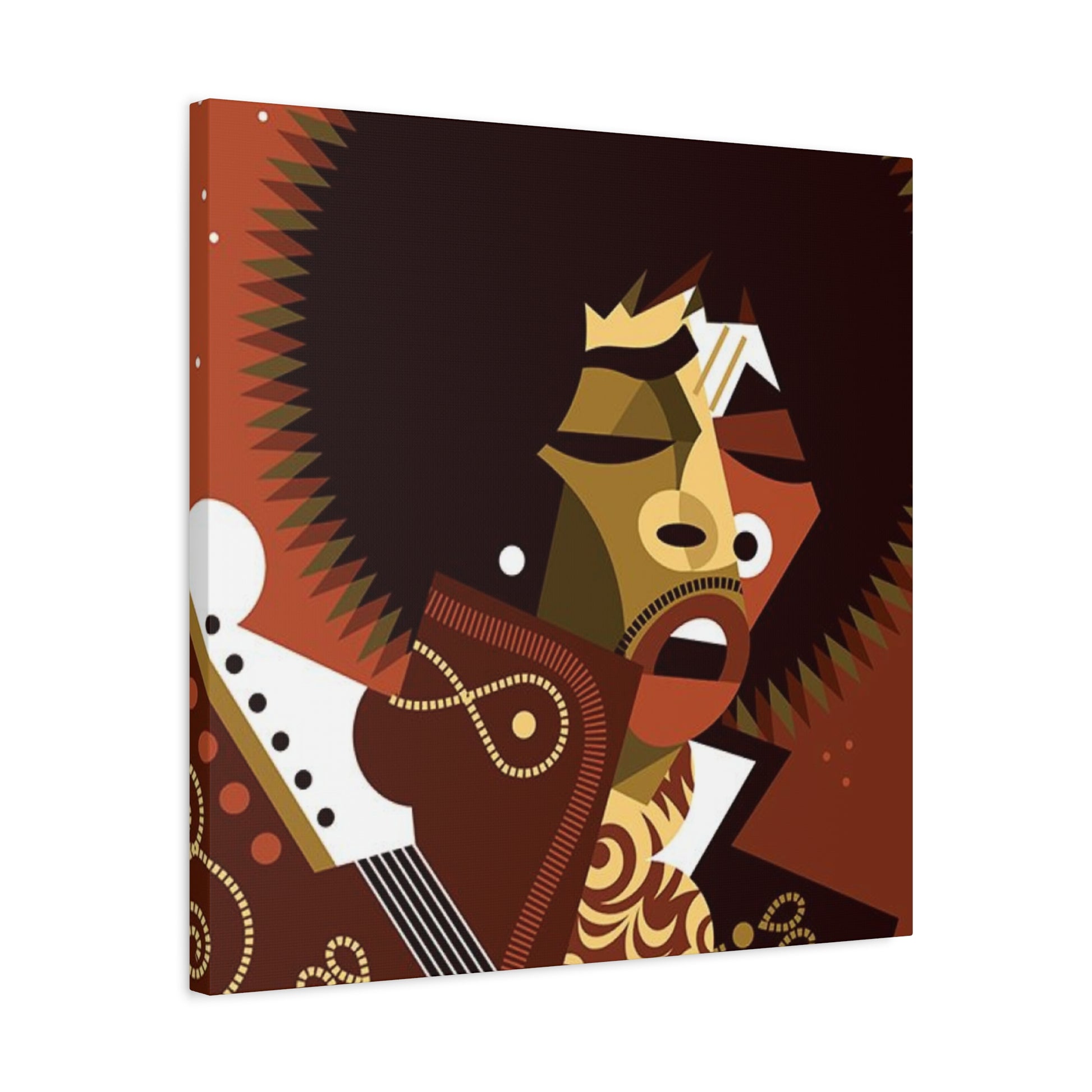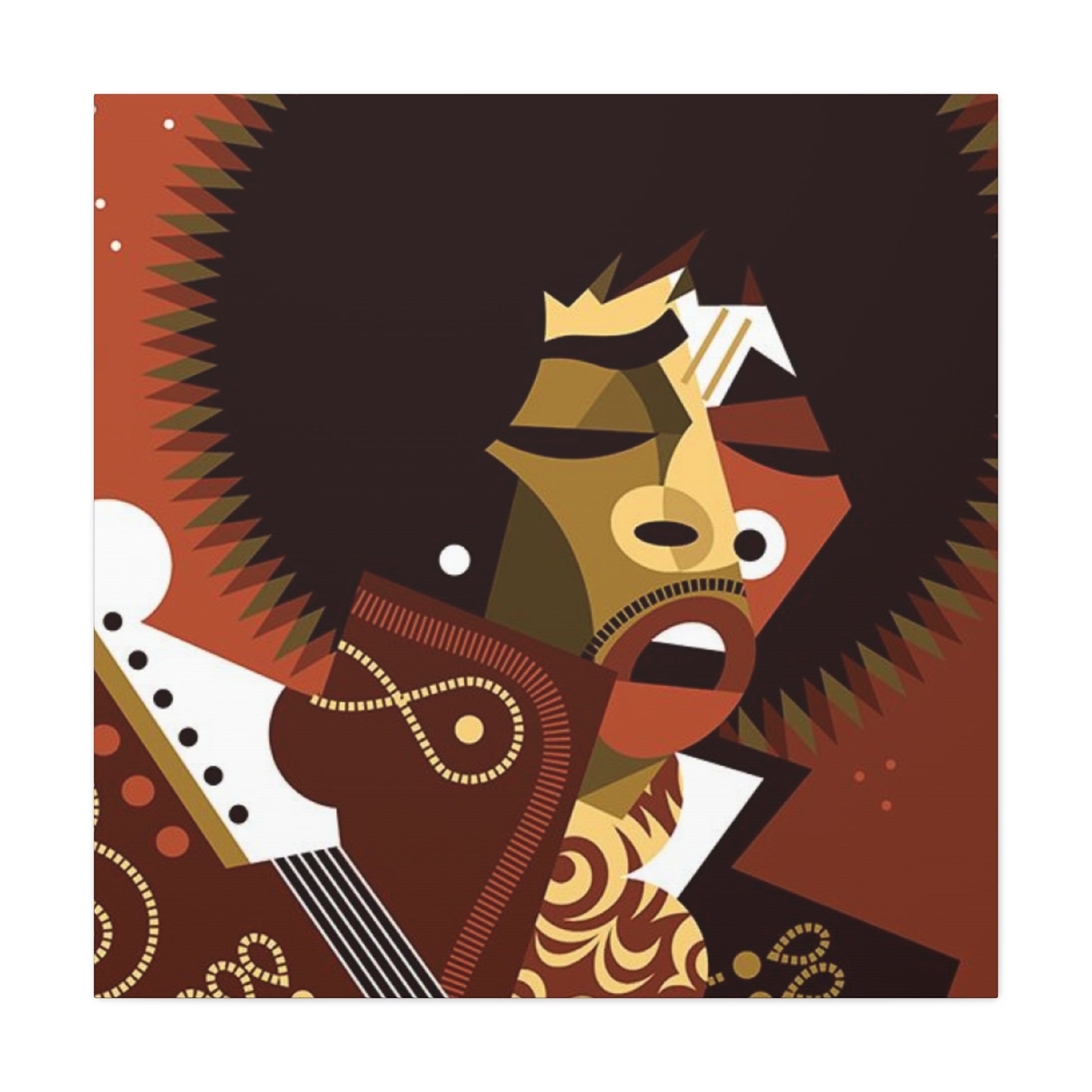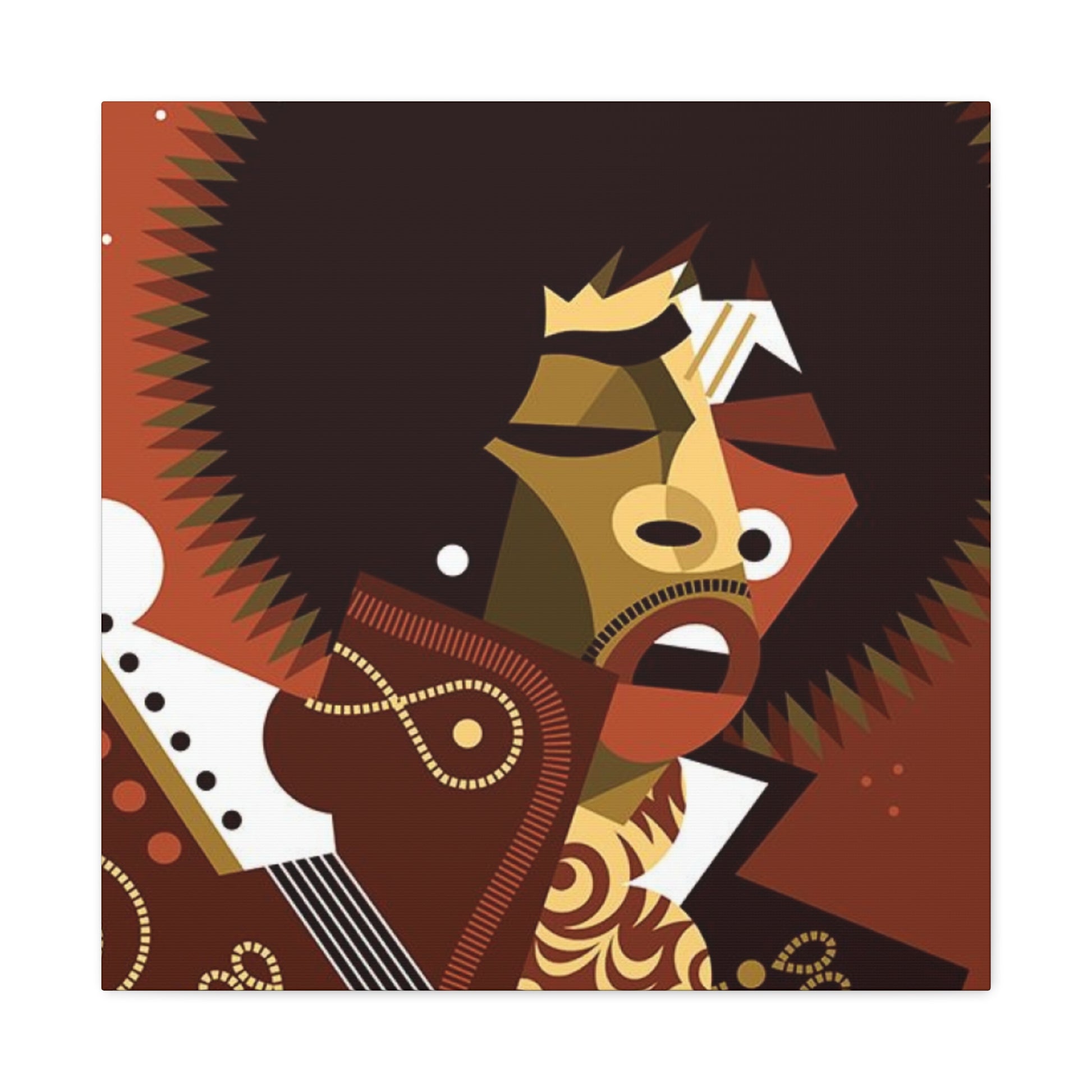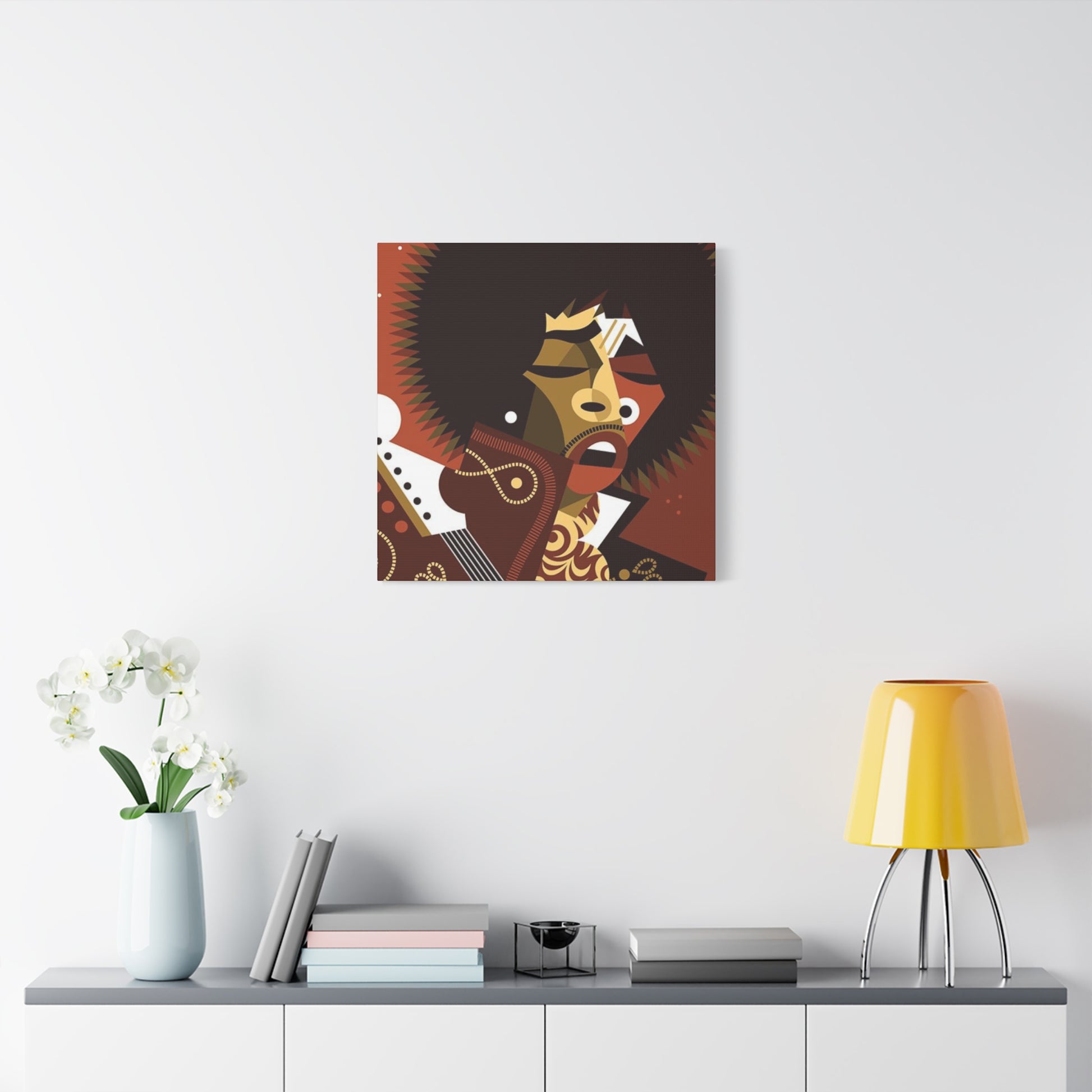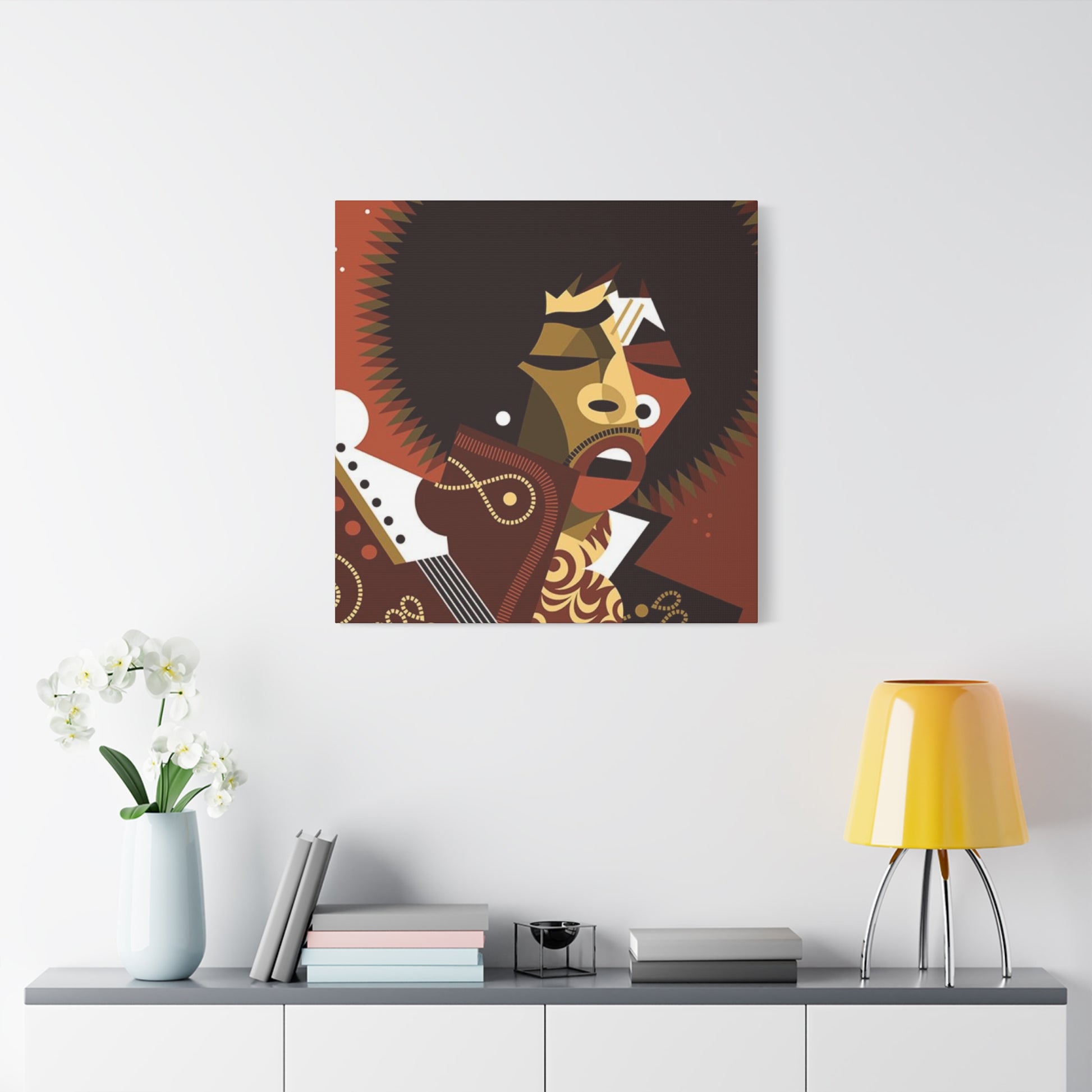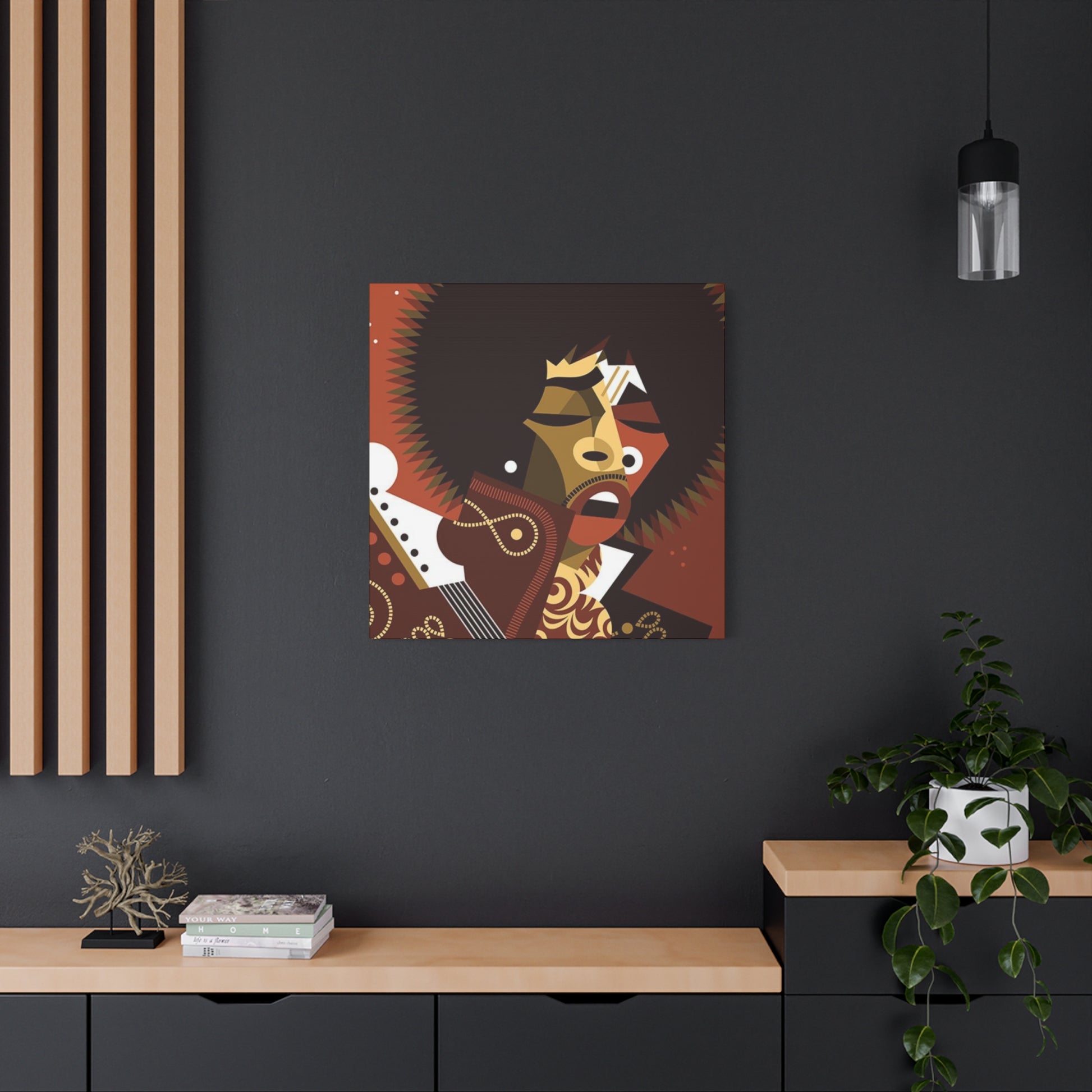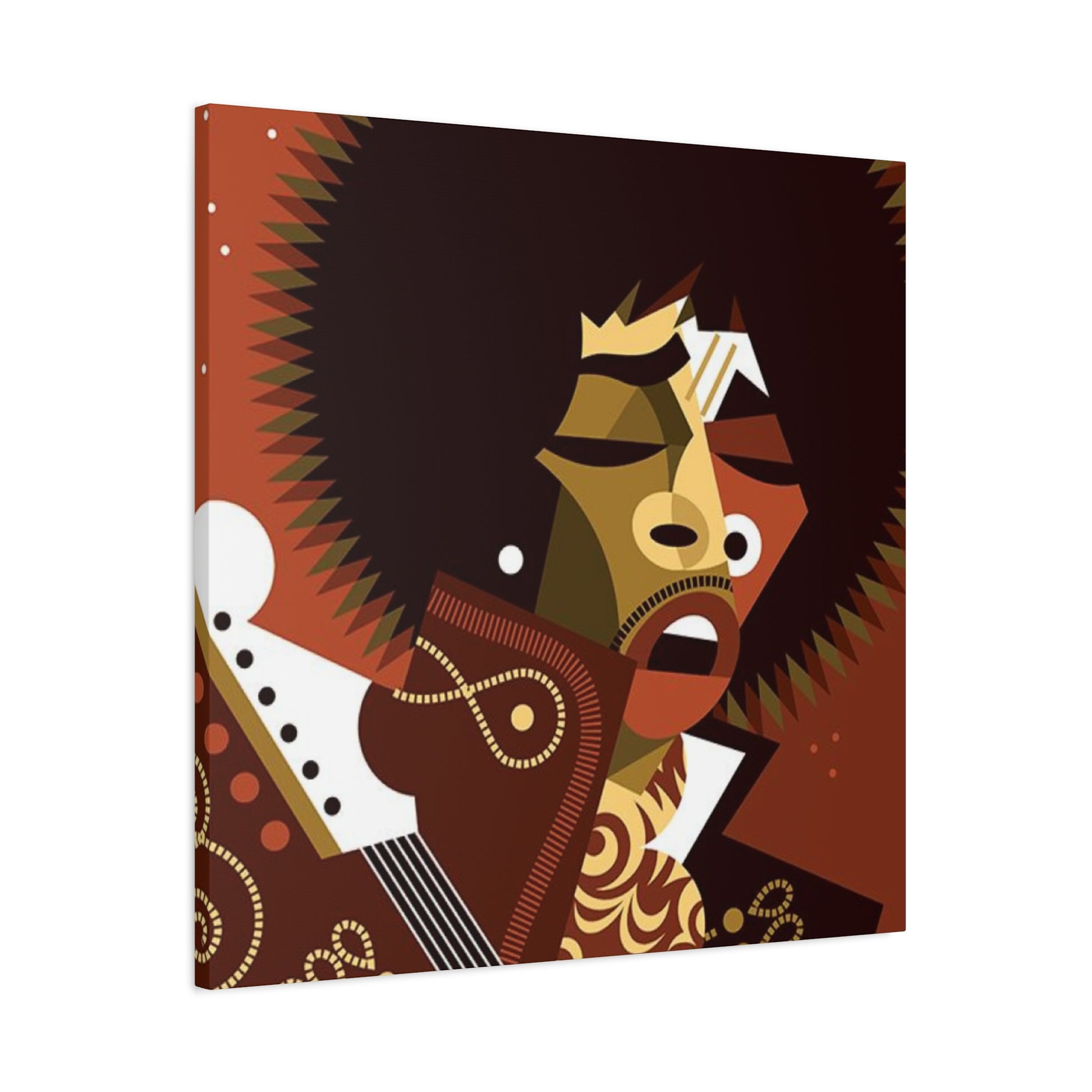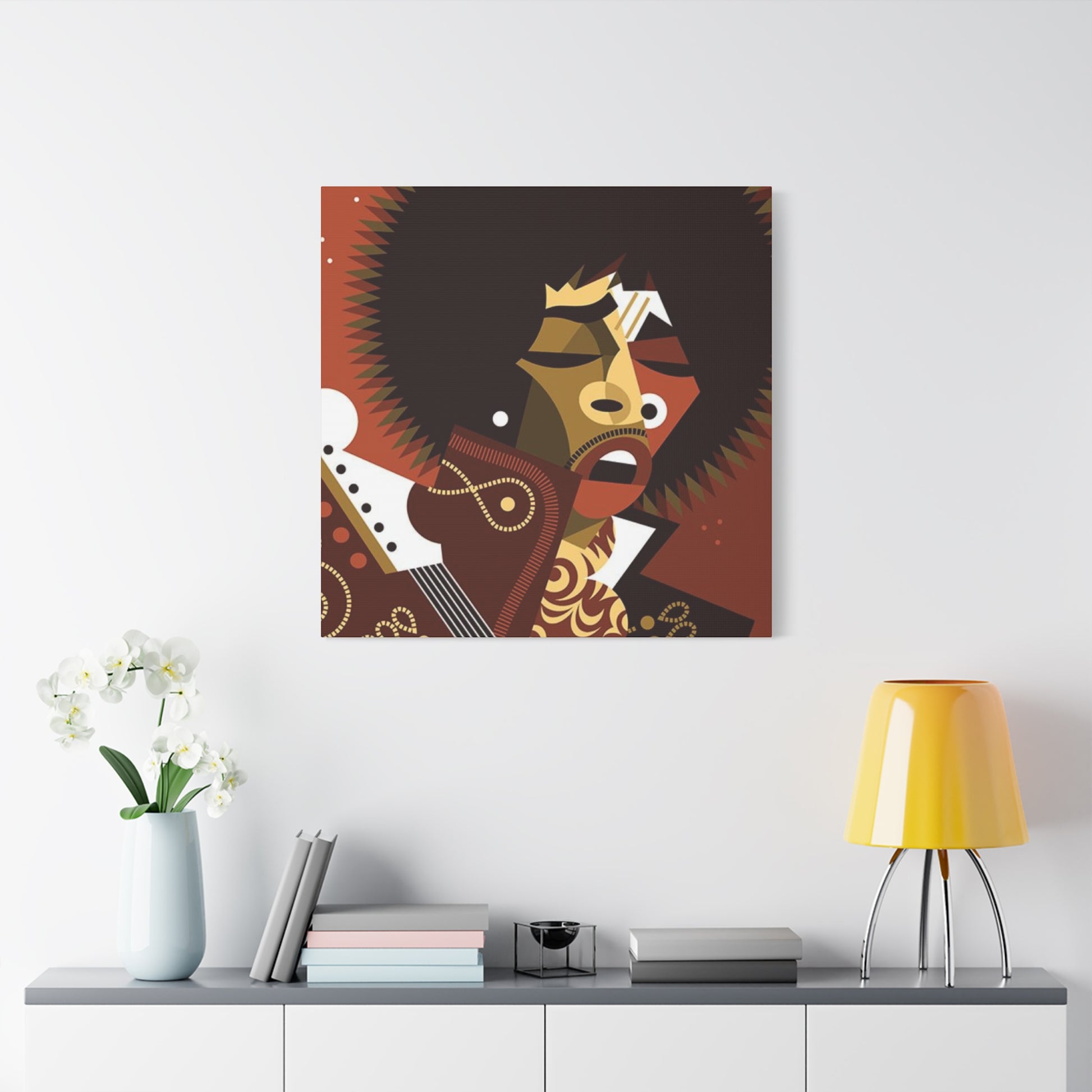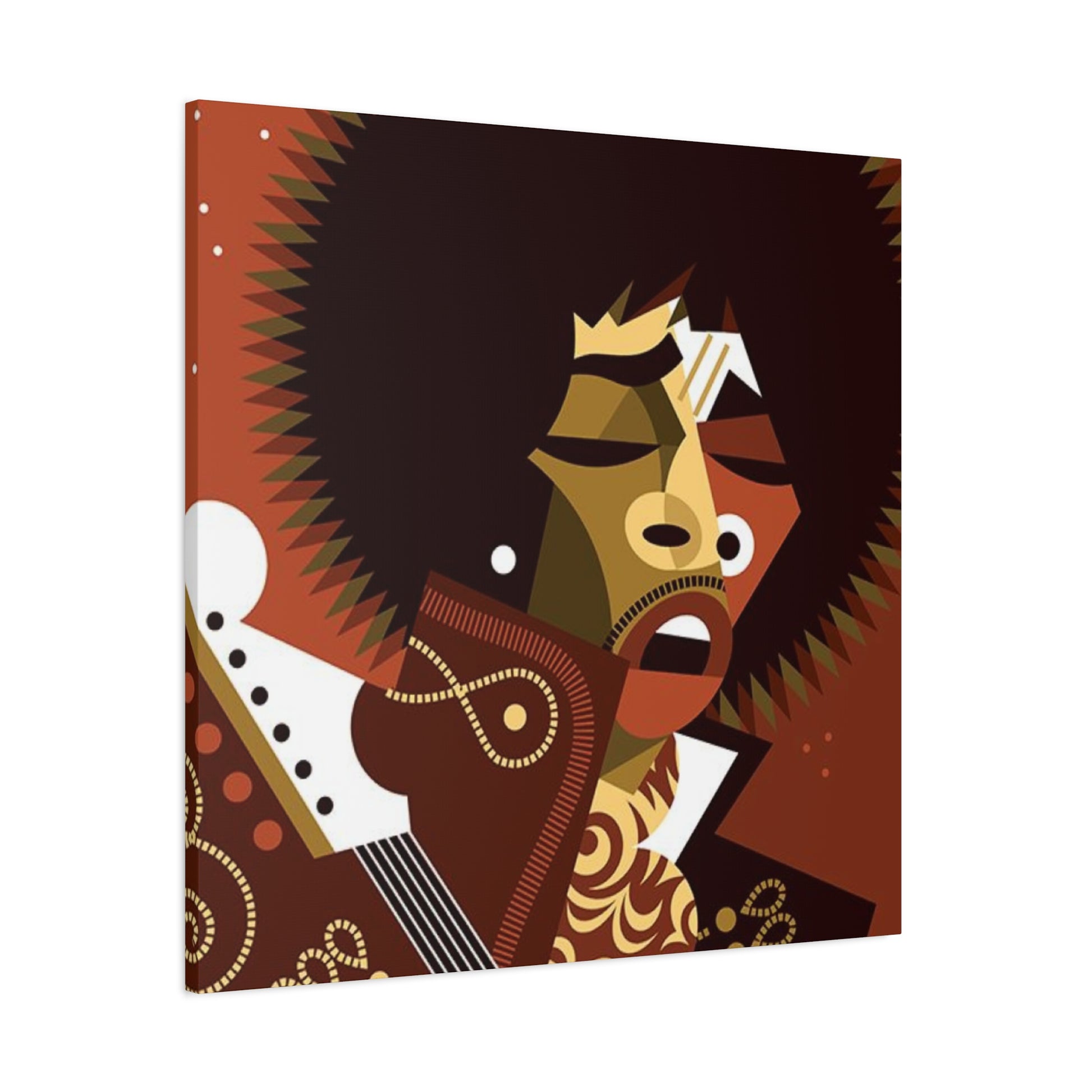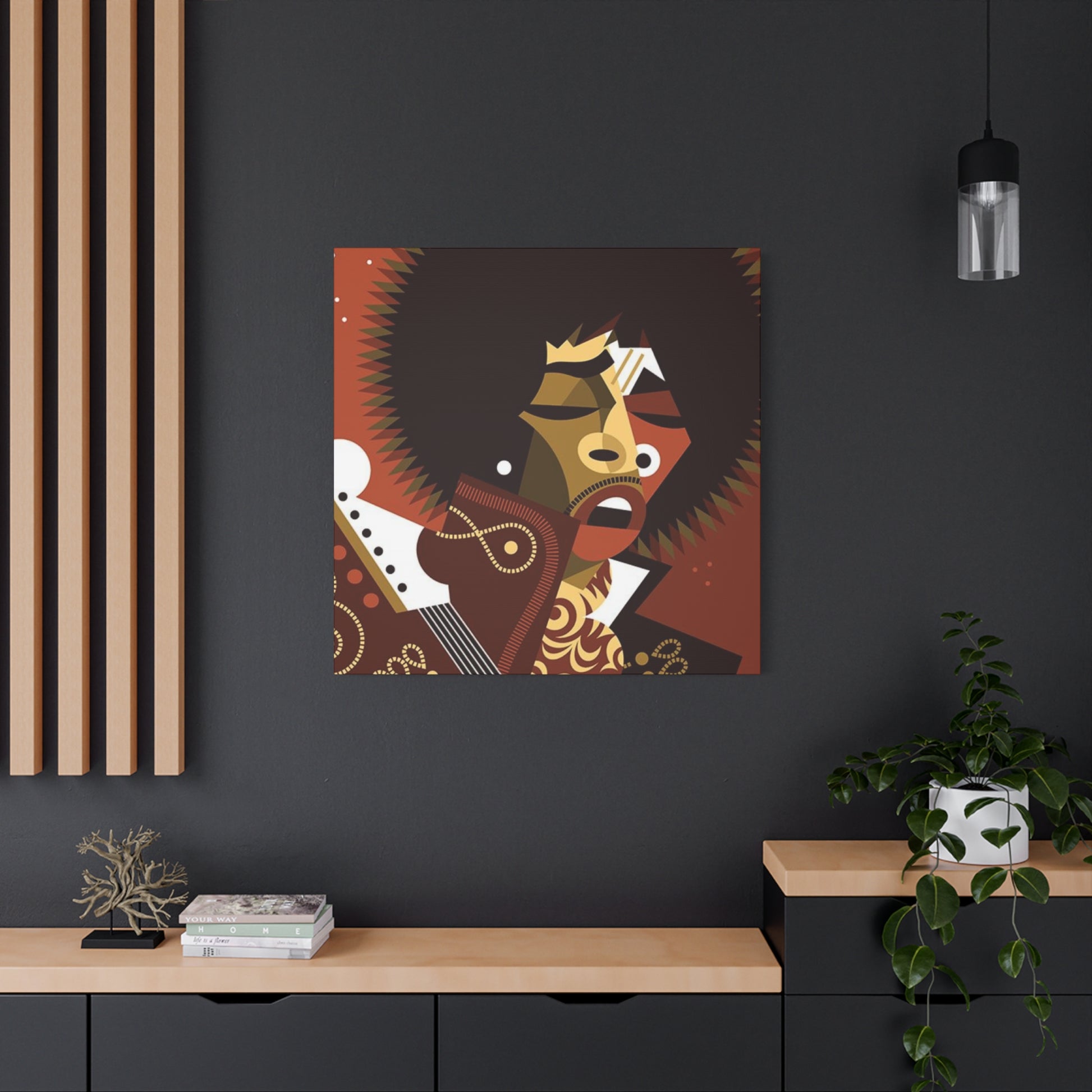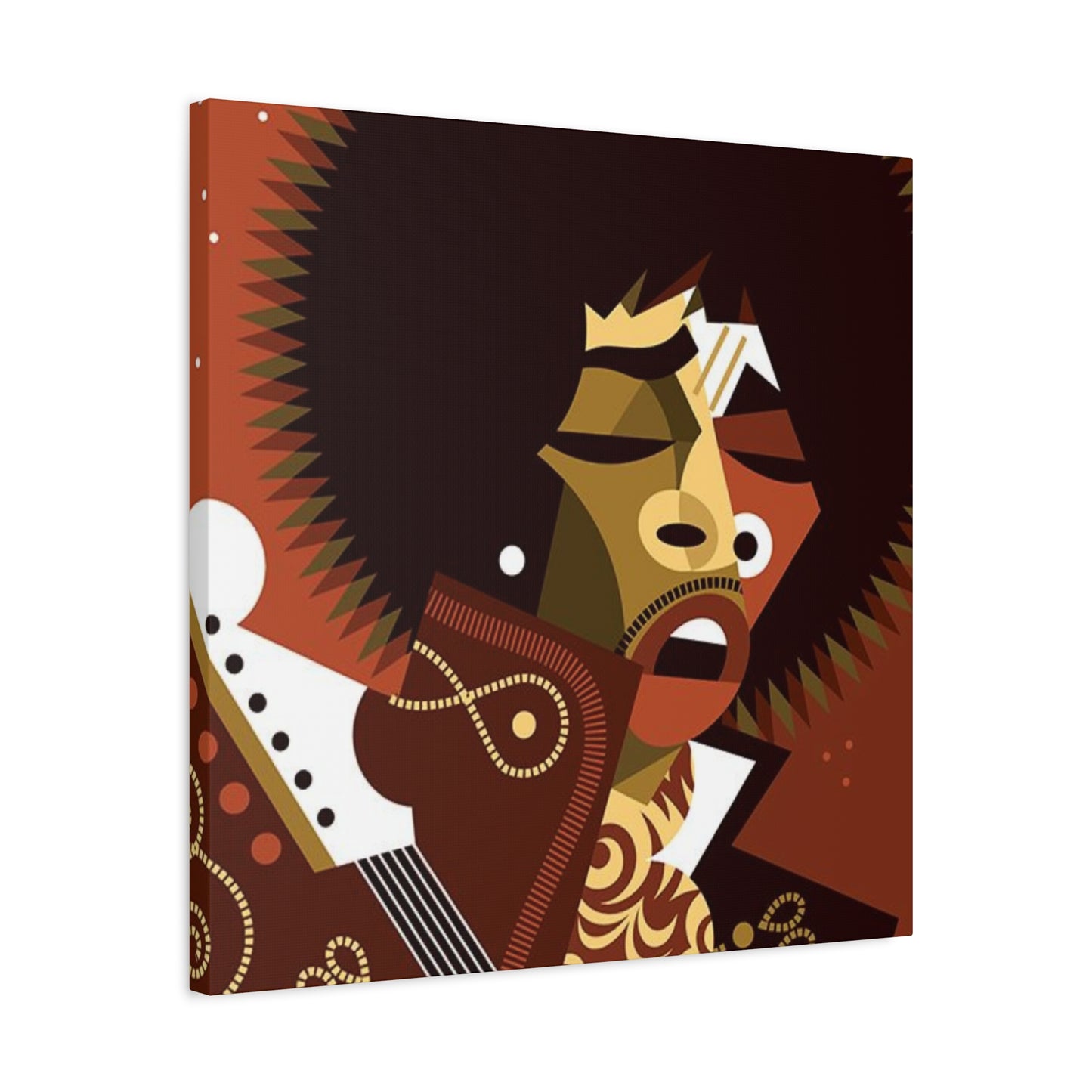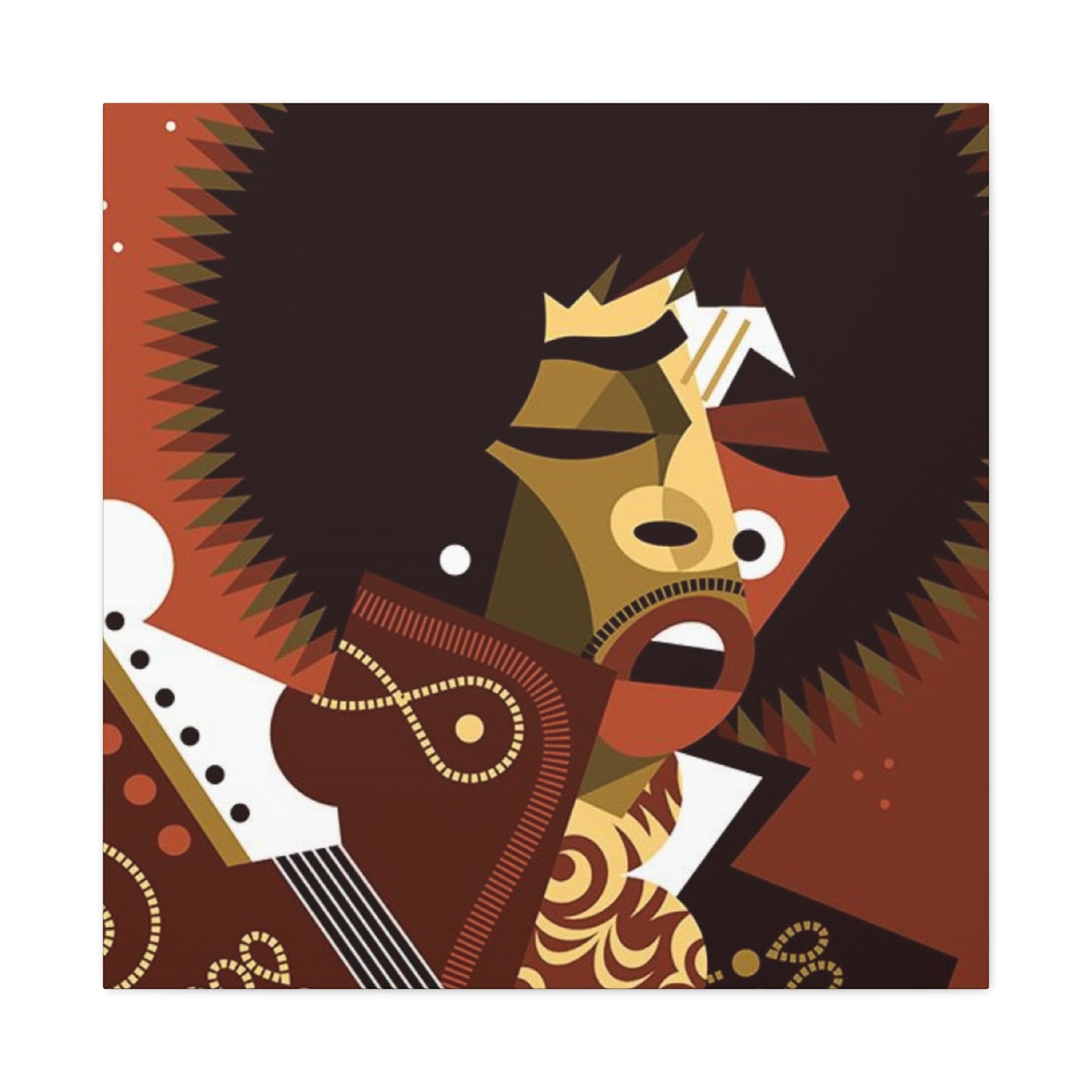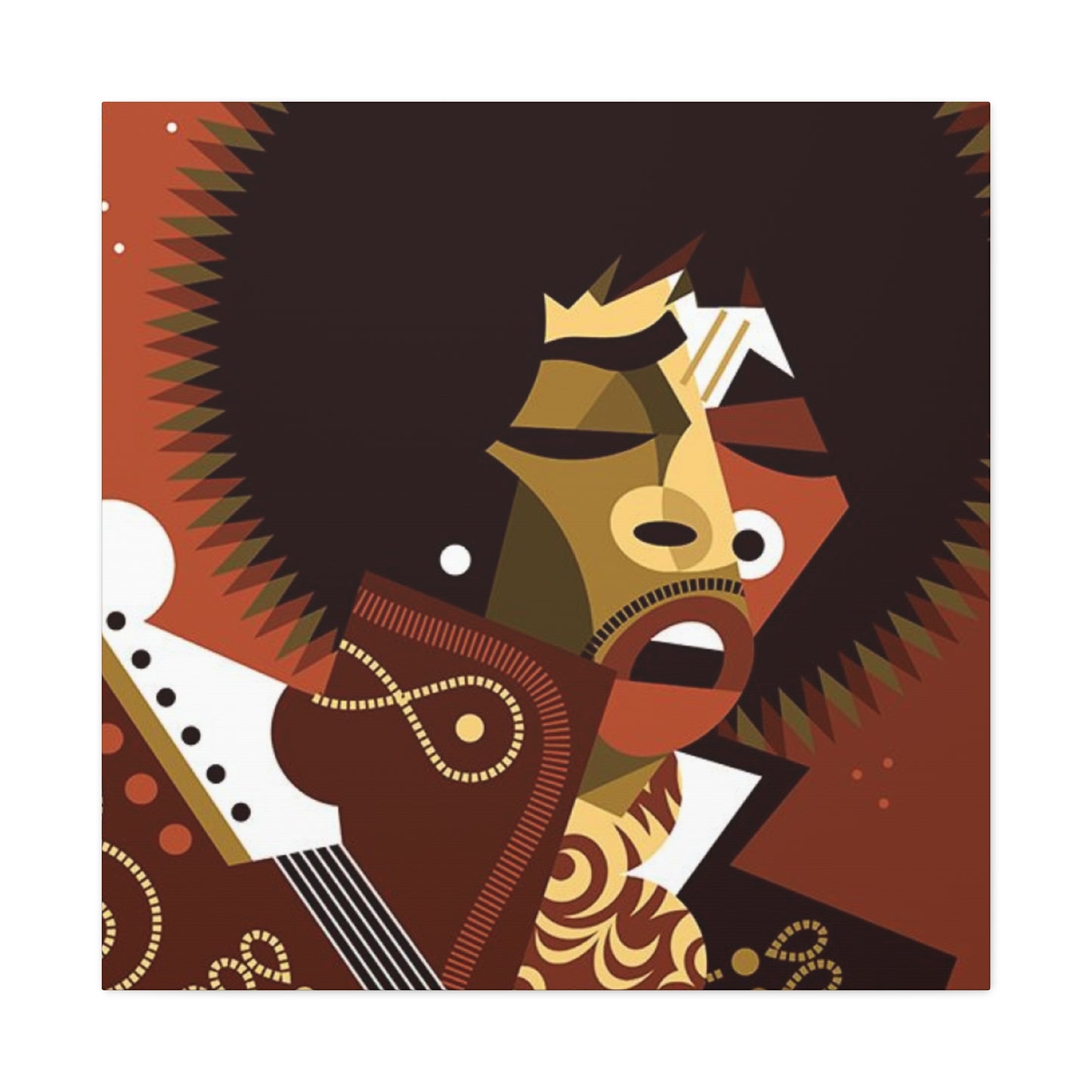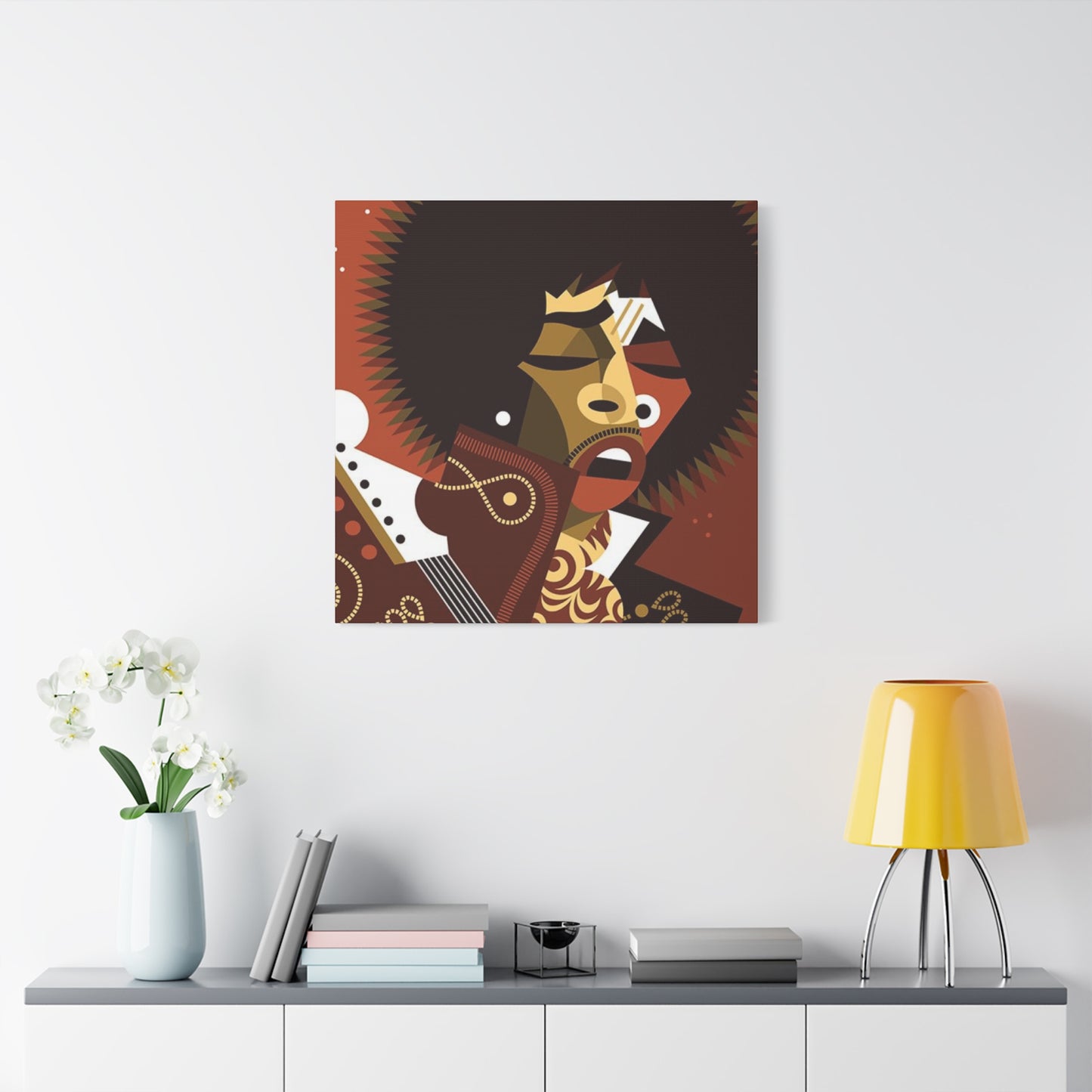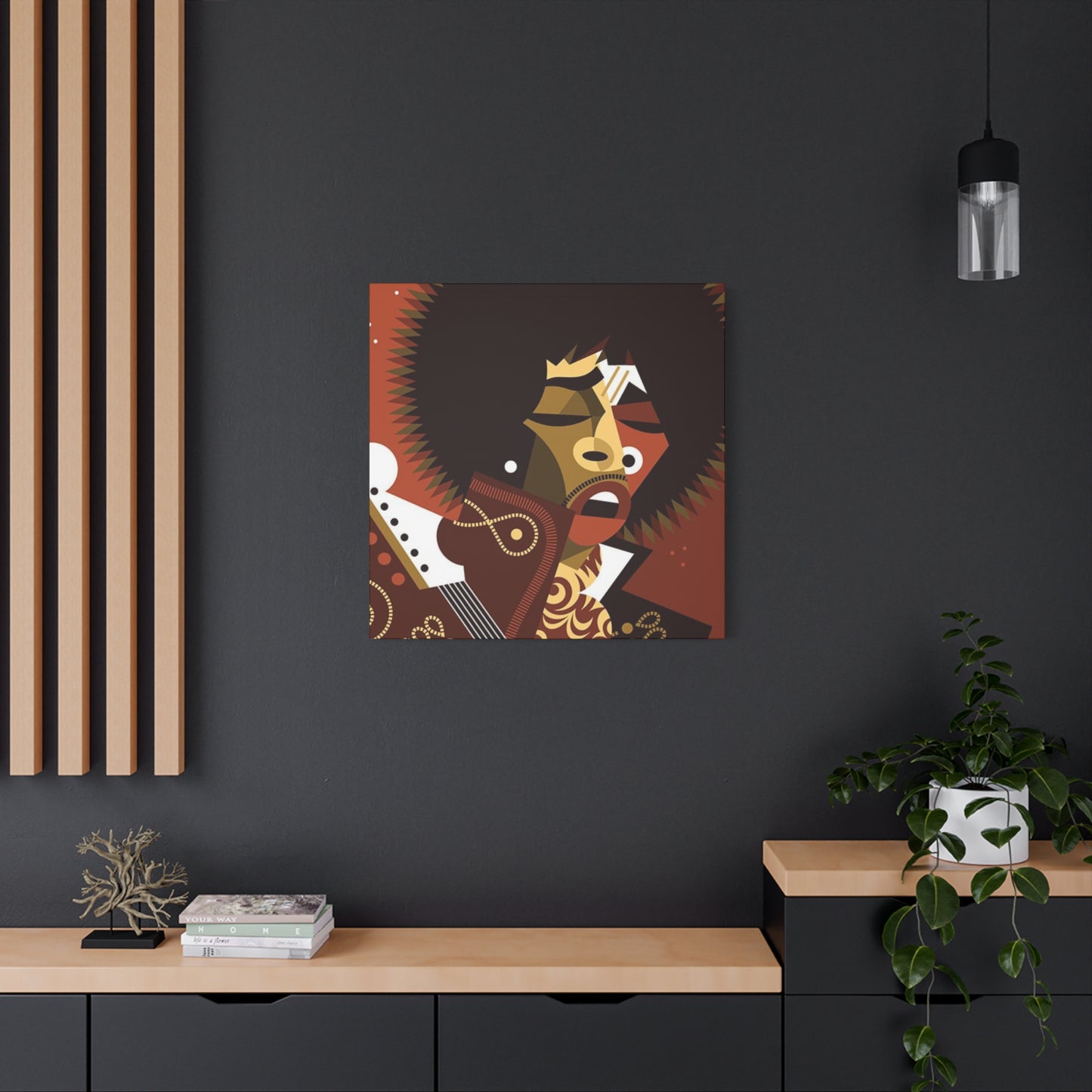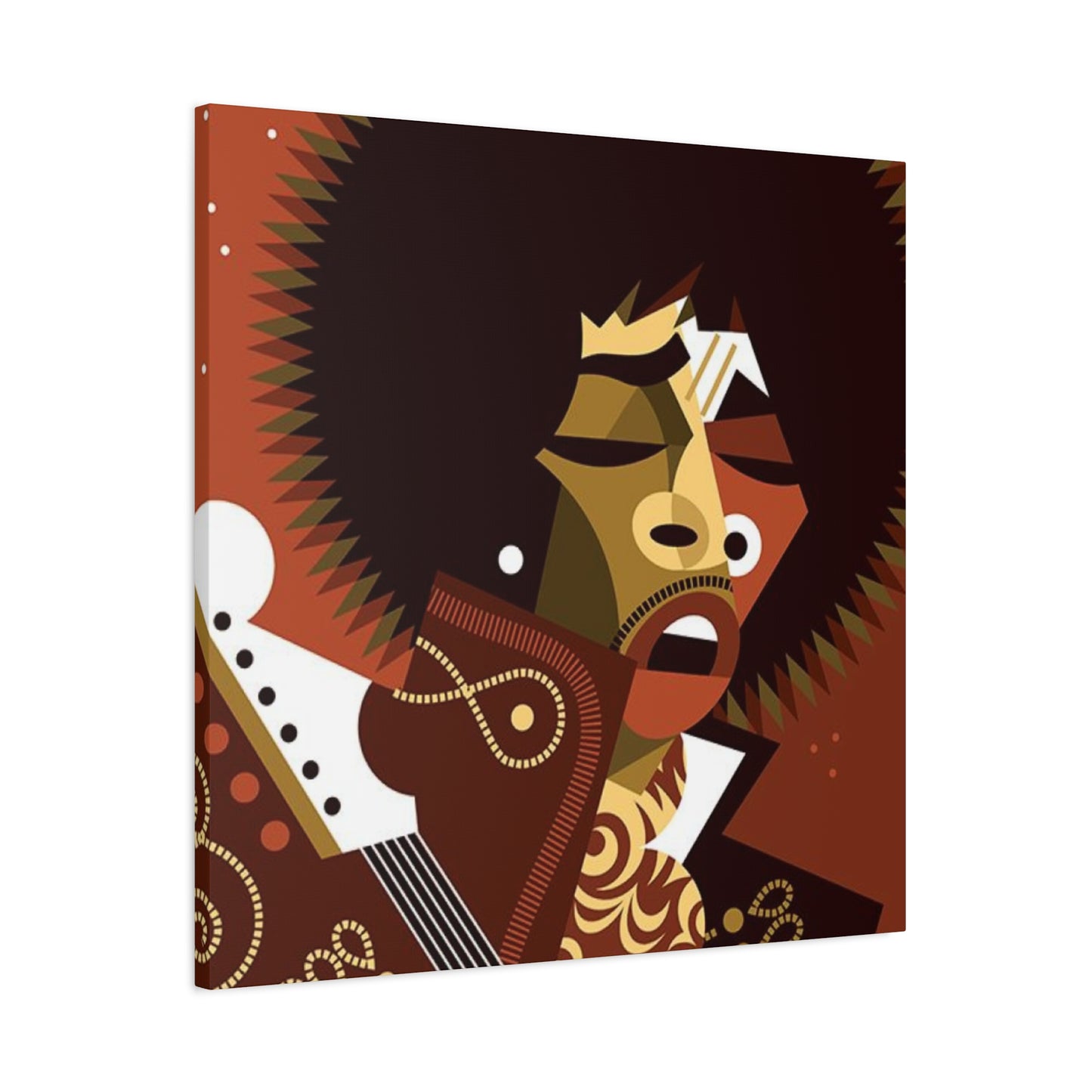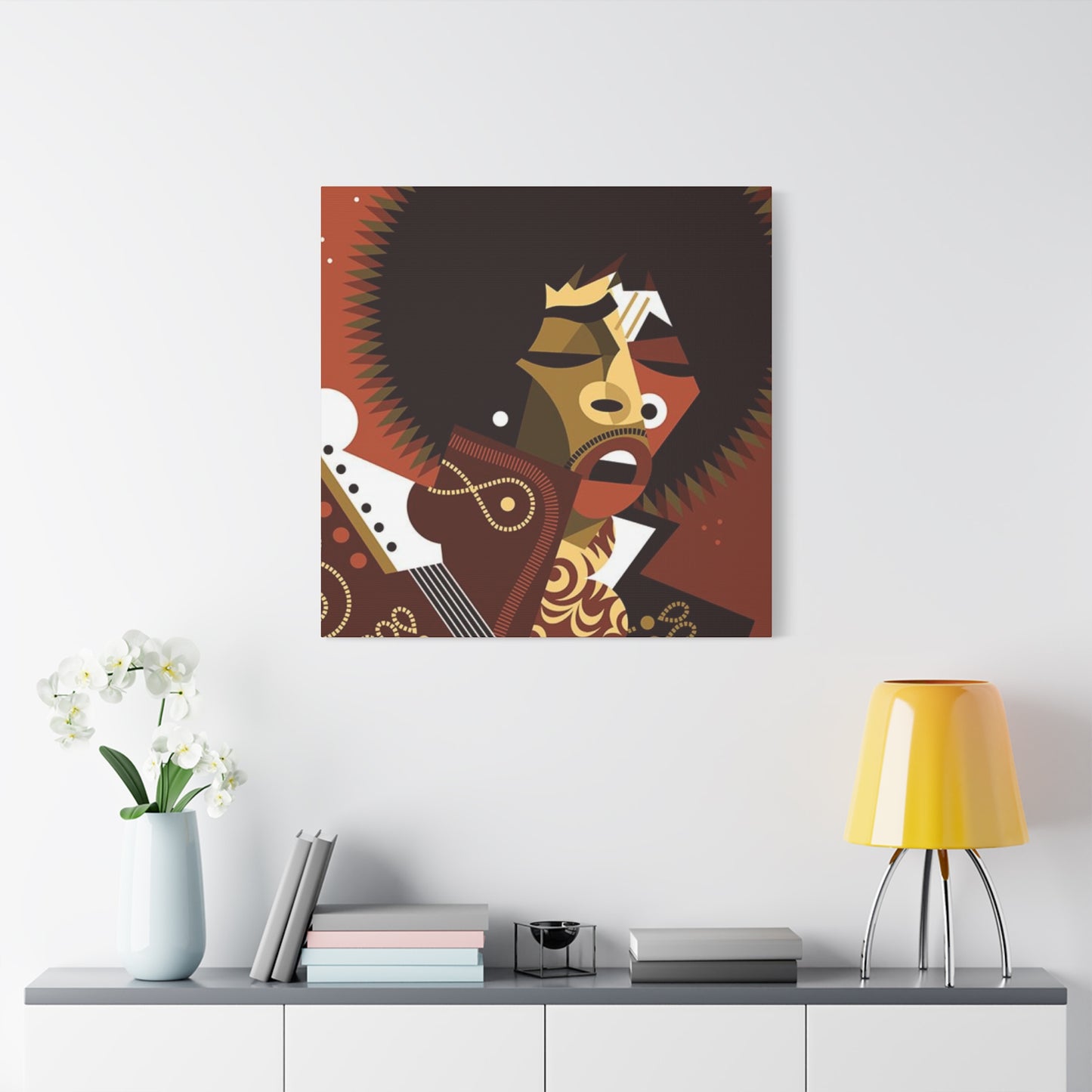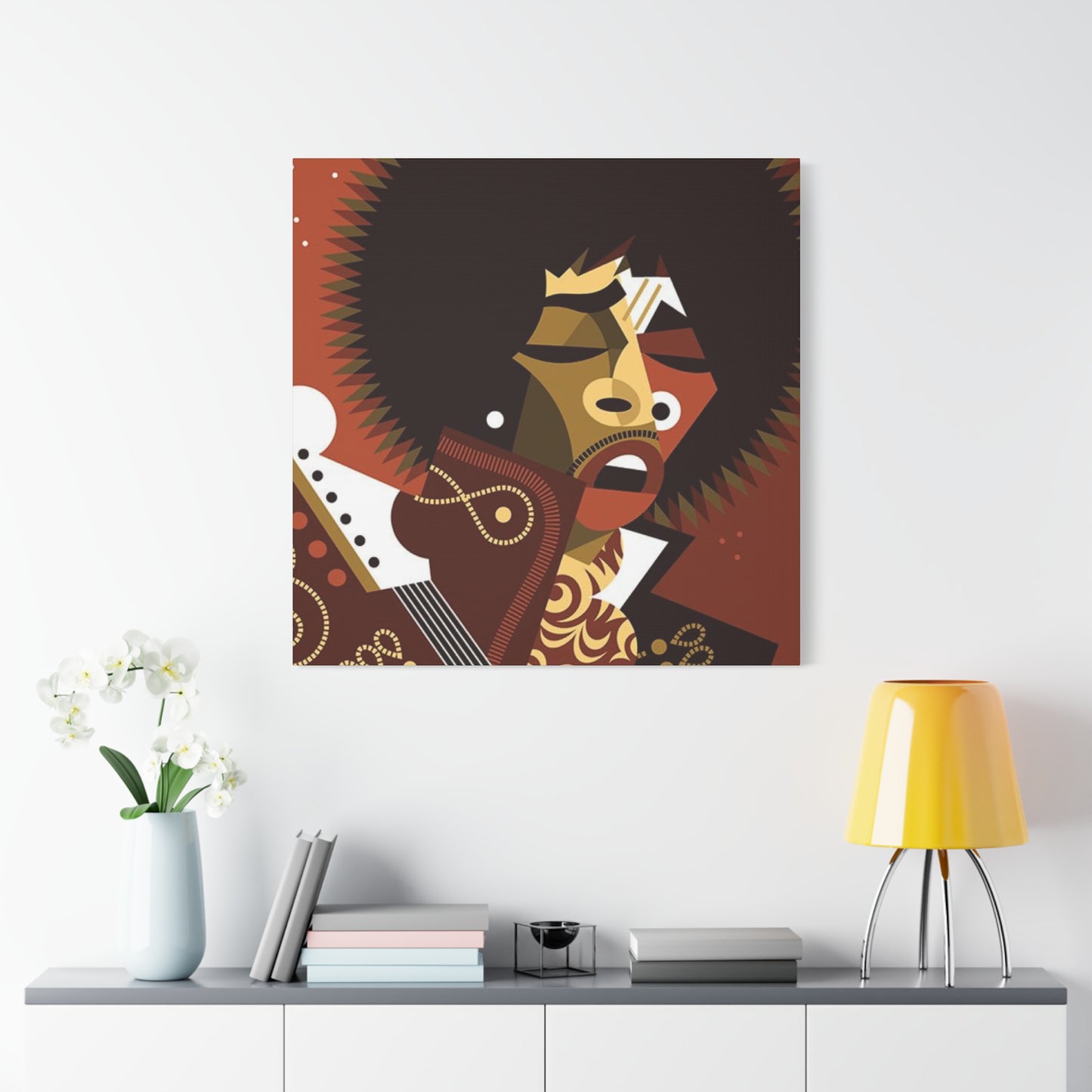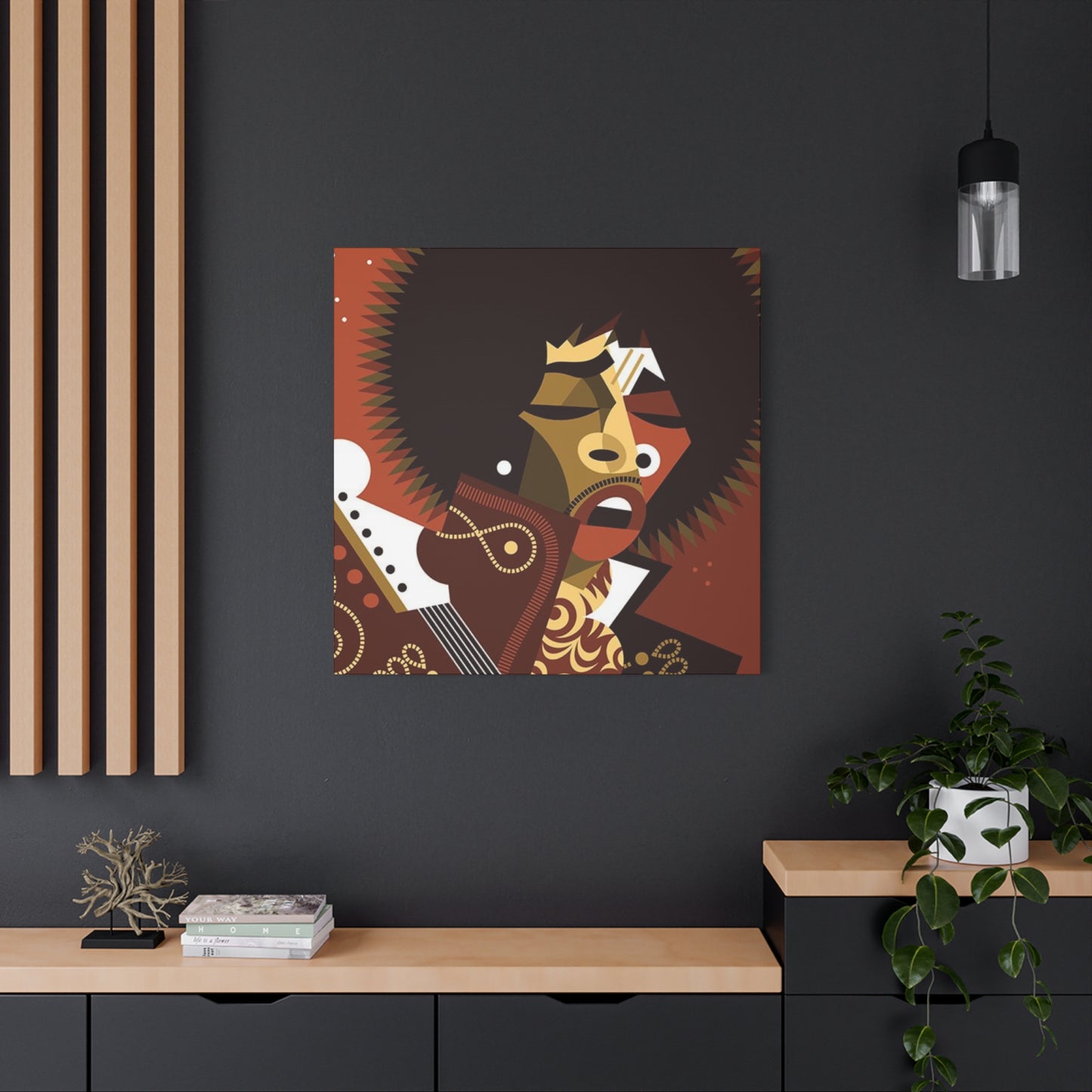Jimi Hendrix Cartoon Wall Art: Transform Your Room with Vibrant Rock Legend Illustrations
The world of home decoration has witnessed a remarkable transformation in recent years, with cartoon-style representations of legendary musicians gaining unprecedented popularity among homeowners and renters alike. Among the most sought-after subjects for these artistic interpretations stands Jimi Hendrix, whose iconic persona translates beautifully into playful, colorful cartoon formats that capture both his musical genius and his vibrant personality. These artistic pieces serve as conversation starters, mood enhancers, and powerful focal points that can completely transform the atmosphere of any living area.
The appeal of cartoon-style rock legend artwork extends far beyond simple nostalgia. These pieces represent a perfect marriage of contemporary artistic expression and timeless musical heritage, creating visual narratives that speak to multiple generations simultaneously. When homeowners choose to incorporate funky Hendrix cartoon creations into their living environments, they are making a statement about their appreciation for both artistic innovation and musical history. The cartoon format allows artists to emphasize certain characteristics that made Hendrix legendary while adding their own creative interpretation through color choices, stylistic elements, and compositional decisions.
The psychological impact of incorporating such dynamic artwork cannot be overstated. Research in environmental psychology suggests that the visual elements we surround ourselves with directly influence our mood, creativity levels, and overall well-being. Cartoon representations of beloved musical figures like Hendrix carry positive associations that can energize a room and create an atmosphere conducive to creativity and relaxation. The playful nature of cartoon art naturally evokes feelings of joy and spontaneity, while the subject matter connects viewers to the revolutionary spirit and artistic freedom that Hendrix embodied throughout his career.
Modern homeowners are increasingly seeking ways to personalize their living environments without committing to permanent changes, particularly in rental situations. Cartoon-style music artwork provides the perfect solution, offering maximum visual impact with minimal commitment. These pieces can be easily relocated, updated, or combined with other decorative elements as personal tastes evolve or living situations change. The versatility of cartoon art styles means they can complement various existing décor themes while still maintaining their distinctive character and appeal.
Exploring the Rich Palette of Psychedelic Cartoon Aesthetics
The psychedelic art movement of the 1960s and 1970s provided the perfect backdrop for Hendrix's musical career, and modern cartoon interpretations often draw heavily from this rich visual tradition. Contemporary artists creating Hendrix-inspired cartoon artwork frequently incorporate the swirling patterns, impossible geometries, and mind-bending color combinations that defined the psychedelic era. These elements work together to create pieces that are not only visually striking but also historically resonant, connecting modern viewers to the cultural revolution that Hendrix helped define.
The color psychology behind psychedelic cartoon art plays a crucial role in its effectiveness as decorative art. Bright purples, electric blues, vibrant oranges, and shocking pinks create visual energy that can instantly transform the feeling of any room. These colors are carefully chosen not just for their visual impact, but for their ability to evoke specific emotional responses. Purple, often associated with creativity and spirituality, reflects Hendrix's innovative approach to music and his transcendent performance style. Electric blue suggests the lightning-like energy of his guitar playing, while warm oranges and reds capture the passion and intensity he brought to every performance.
Artists working in the cartoon psychedelic style often employ techniques that create movement and flow within static images. Swirling backgrounds, flowing hair depicted in impossible colors, and guitar strings that seem to vibrate off the canvas all contribute to the sense that these pieces contain kinetic energy waiting to be released. This visual movement creates a dynamic relationship between the artwork and the viewer, ensuring that the piece continues to reveal new details and create fresh impressions over time. The cartoon format allows for exaggerated proportions and impossible scenarios that would appear jarring in realistic representations but feel natural and engaging in stylized interpretations.
The integration of musical elements into psychedelic cartoon artwork adds another layer of meaning and visual interest. Guitar necks that transform into rainbow spirals, musical notes that dance through the composition like living entities, and amplifiers that sprout flowers or cosmic phenomena all serve to create a visual language that speaks directly to music lovers. These elements help bridge the gap between auditory and visual art, creating pieces that music enthusiasts can appreciate on multiple levels. The cartoon format provides the perfect vehicle for these fantastical elements, allowing artists to create cohesive compositions that would be impossible in more realistic styles.
Vibrant Color Schemes That Energize Living Areas
The strategic use of color in cartoon-style Hendrix artwork extends far beyond simple aesthetic appeal, serving as a powerful tool for room enhancement and mood modification. Professional artists understand that color combinations can dramatically influence how a room feels and functions, and they carefully craft their palettes to maximize positive psychological effects. Bold, saturated colors typical of cartoon art styles create focal points that draw attention and create visual anchor points around which other decorative elements can be arranged.
The contrast between warm and cool colors in these artistic pieces creates visual tension that keeps viewers engaged while maintaining overall harmony. Warm colors like reds, oranges, and yellows naturally advance toward the viewer, creating a sense of energy and excitement, while cooler blues, purples, and greens provide balance and depth. When skillfully combined in cartoon representations of Hendrix, these color relationships create compositions that feel both dynamic and balanced, energizing without overwhelming the viewer or the surrounding environment.
Color temperature also plays a crucial role in how cartoon artwork integrates with existing room lighting. Pieces featuring predominantly warm colors will appear to glow under warm incandescent lighting, creating a cozy, inviting atmosphere perfect for relaxation areas. Conversely, artwork with cooler color palettes can help balance rooms with warm lighting, creating more neutral overall environments. Understanding these relationships allows homeowners to choose pieces that will enhance their existing lighting schemes rather than competing with them.
The saturation levels in cartoon-style artwork can be adjusted to suit different decorative contexts. Highly saturated colors create maximum visual impact and work best as statement pieces in rooms with relatively neutral surroundings. More muted cartoon interpretations can serve as complement pieces that add personality without overwhelming existing color schemes. The cartoon format naturally lends itself to color experimentation, allowing artists to push saturation levels beyond what would be acceptable in realistic portraits while maintaining visual coherence and appeal.
Gradient effects and color transitions within cartoon artwork add sophistication and visual interest that prevents pieces from appearing flat or simplistic. Modern digital art techniques allow for smooth color blending that creates depth and dimension within cartoon representations. These gradients can suggest lighting effects, create atmospheric backgrounds, or simply add visual richness that rewards closer inspection. The interplay between solid cartoon shapes and subtle gradient effects creates a visual hierarchy that guides the viewer's eye through the composition in predictable and pleasing ways.
The Evolution of Pop Art Poster Aesthetics
The influence of pop art on contemporary cartoon-style music artwork cannot be overstated, particularly when examining pieces inspired by iconic figures like Jimi Hendrix. The pop art movement's emphasis on bold colors, simplified forms, and commercial art techniques provides the perfect foundation for modern cartoon interpretations of musical legends. This aesthetic approach transforms complex subjects into immediately recognizable and visually powerful images that function effectively in domestic environments.
Pop art techniques such as Ben-Day dots, bold outlines, and high contrast color schemes translate beautifully into cartoon representations of musical figures. These elements create a sense of energy and movement that captures the dynamic nature of live musical performance while maintaining the accessibility and immediate appeal that makes pop art so enduringly popular. The cartoon format allows artists to exaggerate these pop art elements, creating pieces that are both historically informed and thoroughly contemporary in their appeal.
The commercial art roots of pop art make it particularly suitable for artwork intended for home decoration. The bold, simplified compositions read clearly from across a room, creating immediate visual impact that doesn't require close inspection to appreciate. This quality makes pop art-influenced cartoon pieces ideal for larger living areas where artwork needs to maintain its presence among competing visual elements. The strong graphic quality of these pieces ensures they won't be overwhelmed by furniture, lighting, or architectural features.
Color blocking techniques borrowed from pop art create striking visual effects in cartoon representations of Hendrix. Large areas of solid color create bold shapes that can anchor a room's color scheme, while strategic use of contrasting colors creates focal points that draw attention to specific areas of the composition. These techniques allow cartoon artwork to function as both decorative and functional elements, helping to define different areas within open-plan living arrangements or creating visual balance in asymmetrical room layouts.
The reproducibility aspect of pop art tradition aligns perfectly with the contemporary art market's emphasis on accessible, affordable artwork options. Digital printing technologies allow for high-quality reproduction of cartoon-style pop art pieces, making original artistic concepts available to a broader audience. This democratization of art aligns with both the pop art movement's original intentions and the inclusive spirit that characterized Hendrix's approach to music and performance.
Retro Visual Elements That Bridge Generational Gaps
The incorporation of retro visual elements in cartoon-style Hendrix artwork creates a powerful bridge between different generations of music lovers and art enthusiasts. These pieces often feature design elements from the 1960s and 1970s, including distinctive typography, color palettes, and compositional approaches that immediately evoke the era in which Hendrix created his most influential work. However, the cartoon format updates these vintage elements for contemporary audiences, creating artwork that feels both nostalgic and current.
Typography plays a crucial role in establishing the retro aesthetic of cartoon music artwork. Fonts reminiscent of concert posters, album covers, and promotional materials from the psychedelic era help establish temporal context while adding visual interest to compositions. These typographic elements often feature bold, flowing letterforms that complement the organic shapes and curves typical of cartoon art styles. The integration of text and image creates unified compositions that tell complete stories rather than simply depicting isolated subjects.
Vintage color combinations characteristic of the late 1960s and early 1970s provide instant recognition and emotional connection for viewers familiar with the era. Earth tones mixed with bright accent colors, unusual color pairings that challenged conventional aesthetic rules, and the distinctive faded quality of aged printing processes all contribute to the authentic retro feel of contemporary cartoon interpretations. These color choices connect modern viewers to the revolutionary spirit of the era while maintaining the visual freshness necessary for contemporary home decoration.
The stylistic elements of vintage poster art translate beautifully into cartoon representations of musical legends. Flowing organic shapes, hand-lettered text effects, and the layered composition techniques used in classic concert posters provide rich source material for contemporary artists. The cartoon format allows for modern interpretation of these elements while maintaining their essential character and historical resonance. This approach creates artwork that speaks to multiple generations simultaneously, offering nostalgia for those who lived through the original era and discovery for younger viewers.
Pattern integration represents another important aspect of retro-influenced cartoon art. Geometric patterns, organic textures, and repeated motifs borrowed from textile and graphic design of the psychedelic era add visual complexity and historical authenticity to cartoon compositions. These patterns often serve as background elements that support the main subject while adding period-appropriate detail that enhances the overall retro aesthetic. The cartoon format allows for creative interpretation of these patterns, scaling and modifying them to serve compositional needs while maintaining their essential character.
Creating Dynamic Guitar-Focused Compositions
The guitar represents more than just a musical instrument in cartoon representations of Jimi Hendrix; it serves as a powerful visual symbol that can anchor entire compositions and create compelling focal points. Artists working in cartoon styles have unique opportunities to reimagine the guitar as a dynamic, almost living element within their compositions. The instrument can be depicted with exaggerated proportions, impossible colors, and fantastical modifications that would be impractical in realistic representations but feel natural and exciting in cartoon contexts.
The relationship between figure and instrument in cartoon artwork often becomes symbiotic, with the boundaries between musician and guitar deliberately blurred to suggest the deep connection between artist and tool. Cartoon techniques allow for visual metaphors that show guitar strings extending into the performer's hair, or instrument shapes echoing the curves of the human form. These artistic choices create compositions that communicate the intimate relationship between Hendrix and his instrument while maintaining the playful, accessible quality that makes cartoon art so appealing for home decoration.
Color treatment of guitars in cartoon artwork provides opportunities for creative expression that can dramatically impact the overall composition. Electric guitars rendered in impossible colors like chrome silver, deep purple, or rainbow gradients create visual excitement that captures the electric energy of live performance. The cartoon format liberates artists from realistic color constraints, allowing them to choose colors that serve compositional and emotional needs rather than literal representation. These color choices can tie guitar elements to other parts of the composition or create striking contrasts that enhance the artwork's visual impact.
The depiction of sound in cartoon artwork presents unique challenges and opportunities for creative expression. Artists often employ visual devices like radiating lines, color bursts, or abstract patterns to suggest the powerful sound emanating from Hendrix's guitar. These elements must be carefully balanced to enhance rather than overwhelm the main composition while clearly communicating the audio-visual synergy that made Hendrix's performances so compelling. The cartoon style provides perfect opportunities for these abstract elements, allowing for creative interpretations that would appear awkward in more realistic artistic approaches.
Dynamic poses and movement suggestions help cartoon guitar-focused compositions capture the kinetic energy of live musical performance. Exaggerated gestures, flowing clothing, and implied movement through compositional techniques all contribute to the sense that these static images contain frozen moments of intense musical expression. The cartoon format naturally lends itself to these exaggerated poses, allowing artists to push physical proportions and positions beyond realistic limits while maintaining visual coherence and appeal.
The Psychology of Whimsical Rock Icon Representations
The psychological appeal of whimsical representations of rock icons like Jimi Hendrix operates on multiple levels, creating artwork that resonates with viewers' emotional and intellectual responses simultaneously. The cartoon format naturally evokes positive associations with childhood, creativity, and playfulness, while the rock icon subject matter connects to feelings of rebellion, artistic freedom, and cultural significance. This combination creates artwork that can simultaneously comfort and inspire, making it particularly effective for home environments where people seek both relaxation and motivation.
Whimsical elements in cartoon representations serve to humanize legendary figures, making them more approachable and relatable while maintaining their iconic status. By depicting Hendrix with exaggerated features, playful expressions, or impossible scenarios, artists create works that celebrate the person behind the legend while acknowledging his extraordinary contributions to music and culture. This approach helps viewers connect personally with historical figures who might otherwise seem distant or intimidating in their legendary status.
The emotional accessibility of whimsical artwork makes it particularly effective for creating positive room atmospheres. Unlike more serious or formal artistic representations, whimsical cartoon pieces invite interaction and contemplation without demanding reverence or academic knowledge. This quality makes them ideal for living areas where people gather for relaxation and social interaction, as the artwork contributes to comfortable, welcoming environments rather than creating feelings of intimidation or cultural inadequacy.
Color psychology plays a crucial role in the effectiveness of whimsical rock icon representations. Bright, saturated colors typically associated with cartoon art naturally elevate mood and energy levels, while the playful subject treatment prevents these effects from becoming overwhelming or aggressive. The combination creates artwork that energizes without agitating, making it suitable for a wide range of room types and uses. This psychological balance makes whimsical cartoon artwork particularly versatile for home decoration applications.
The narrative possibilities inherent in whimsical representations add layers of meaning and interest that reward repeated viewing. Cartoon techniques allow artists to include details, references, and visual jokes that may not be immediately apparent but become part of the artwork's ongoing appeal. These elements create pieces that continue to reveal new aspects over time, maintaining viewer interest and preventing the visual fatigue that can affect more static or literal artistic representations. The discovery aspect of whimsical artwork contributes to its long-term decorative value.
Incorporating Animated Energy into Static Artwork
The challenge of capturing the dynamic energy of live musical performance in static artwork becomes particularly interesting when working within cartoon aesthetic frameworks. Artists must employ various visual techniques to suggest movement, sound, and the electric atmosphere that characterized Hendrix's performances. The cartoon format provides unique opportunities for these representations, allowing for exaggerated gestures, impossible physics, and abstract elements that communicate energy more effectively than realistic approaches might achieve.
Motion lines, a staple of cartoon and comic art, serve as powerful tools for suggesting movement in static compositions. These simple but effective visual devices can show guitar strings vibrating, hair flowing, or bodies moving through performance gestures. When skillfully integrated into cartoon compositions, motion lines add dynamic elements without cluttering or confusing the overall image. The key lies in using these elements strategically to enhance rather than overwhelm the main subject matter.
Color and lighting effects provide another avenue for suggesting animated energy in cartoon artwork. Radiating color bursts, gradient effects that suggest lighting changes, and strategic use of high contrast areas can all contribute to the sense that static images contain frozen moments of intense activity. These techniques work particularly well in cartoon contexts because the stylized nature of the format makes abstract color effects feel natural rather than forced or artificial.
Compositional techniques borrowed from animation and filmmaking can enhance the sense of movement in cartoon artwork. Dynamic angles, cropped compositions that suggest action continuing beyond the frame, and layered elements that create depth all contribute to visual excitement. The cartoon format provides flexibility for these approaches, allowing artists to push compositional extremes that might appear awkward in realistic representations but feel natural and engaging in stylized contexts.
The integration of abstract elements representing sound and music adds another layer of animated energy to static cartoon artwork. Visual representations of sound waves, musical notes that appear to dance through compositions, and color patterns that suggest rhythm and melody all help bridge the gap between visual and auditory art forms. These elements must be carefully balanced to enhance rather than distract from the main subject while clearly communicating the musical context that gives the artwork its meaning and relevance.
Bold Visual Impact Through Cartoon Illustration Techniques
Cartoon illustration techniques offer unique advantages for creating artwork with maximum visual impact, particularly when dealing with iconic subjects like Jimi Hendrix. The simplified forms, bold outlines, and exaggerated features characteristic of cartoon styles naturally create images that read clearly and powerfully from across a room. These qualities make cartoon illustrations particularly effective for home decoration, where artwork must compete with furniture, lighting, and architectural elements for visual attention.
Contrast management represents a crucial skill in creating impactful cartoon illustrations. High contrast between light and dark elements, warm and cool colors, and large and small shapes helps create visual hierarchy and ensures that important elements receive appropriate attention. Cartoon techniques naturally lend themselves to strong contrast effects, as the simplified forms and bold color choices typical of the style create clear distinctions between different compositional elements.
Scale relationships within cartoon compositions can be manipulated to create dramatic effects that would appear strange or uncomfortable in realistic artwork but feel natural and exciting in cartoon contexts. Oversized guitars, exaggerated facial features, or impossible proportions between different elements all serve to create visual interest and communicate aspects of the subject's personality or significance. These scale manipulations must be handled skillfully to maintain overall compositional balance while achieving desired impact effects.
Line quality plays a fundamental role in creating bold cartoon illustrations. Heavy outlines help separate elements and create strong graphic effects, while line variation can suggest depth, movement, and texture within simplified forms. The cartoon format allows for creative line treatments that would appear inappropriate in realistic artwork but serve important compositional and expressive functions in stylized representations. Line weight variations can guide viewer attention, suggest three-dimensional form, and add visual interest to otherwise simple shapes.
Color saturation levels in cartoon illustrations can be pushed to extremes that create powerful visual effects. Highly saturated colors naturally command attention and create emotional responses, while strategic use of less saturated areas provides visual rest and compositional balance. The cartoon format provides the perfect context for these saturated color approaches, as the stylized nature of the work makes intense colors feel appropriate rather than garish or overwhelming.
Music-Themed Artwork as Lifestyle Expression
The choice to incorporate music-themed cartoon artwork into home environments represents more than simple decoration; it serves as a form of lifestyle expression that communicates personal values, interests, and cultural affiliations. Hendrix-inspired cartoon pieces carry specific cultural meanings that resonate with viewers who identify with the artist's revolutionary approach to music, his commitment to artistic innovation, and his influence on popular culture. These pieces allow homeowners to make statements about their own creative values and cultural awareness.
The social aspect of music-themed artwork cannot be overlooked, as these pieces often serve as conversation starters that help establish connections between residents and visitors. Cartoon representations of beloved musical figures create approachable entry points for discussions about music, art, and culture, fostering social interactions that might not occur in the presence of more abstract or challenging artistic works. The familiarity and accessibility of both cartoon formats and iconic musical subjects help create comfortable social environments.
Personal identity expression through artwork choices reflects deeper psychological needs for self-definition and cultural connection. By choosing cartoon representations of influential musicians, homeowners align themselves with the creative energy, revolutionary spirit, and artistic freedom that these figures represent. This alignment provides ongoing inspiration and reinforcement of personal values that can influence behavior and decision-making beyond the immediate visual impact of the artwork itself.
The democratic nature of cartoon art makes it particularly effective for lifestyle expression across different socioeconomic contexts. Unlike other art forms that may require significant cultural capital or financial investment, cartoon artwork remains accessible while still providing meaningful opportunities for personal expression. This accessibility aligns with the inclusive spirit that characterized much of Hendrix's music and persona, creating authentic connections between artistic medium and subject matter.
Collection building represents another aspect of lifestyle expression through music-themed cartoon artwork. Many enthusiasts begin with single pieces and gradually develop curated collections that reflect evolving tastes, expanding knowledge, and deepening appreciation for both musical and visual arts. The cartoon format provides rich opportunities for collection development, as different artists bring unique interpretations and styles to similar subject matter, creating opportunities for comparative appreciation and artistic discovery.
The Intersection of Music History and Contemporary Art
Contemporary cartoon representations of Jimi Hendrix exist at the fascinating intersection of music history preservation and modern artistic innovation. These works serve dual functions as both historical tributes and contemporary creative expressions, creating pieces that honor the past while speaking to present-day audiences through current artistic sensibilities. This temporal bridge-building represents one of the most compelling aspects of music-inspired cartoon artwork, as it keeps cultural heritage alive while allowing for fresh interpretive approaches.
Educational aspects of historically-informed cartoon artwork should not be underestimated. These pieces often introduce younger viewers to important musical figures and cultural movements they might not otherwise encounter, serving as visual gateways to deeper historical exploration. The approachable nature of cartoon representations makes them particularly effective educational tools, as they present historical subjects in formats that contemporary audiences find familiar and engaging.
The recontextualization of historical figures through contemporary artistic techniques reflects broader cultural trends toward accessibility and inclusion in arts and education. By presenting Hendrix through cartoon aesthetics, artists make his legacy available to audiences who might find traditional biographical or documentary approaches less engaging. This democratization of cultural education aligns with evolving ideas about how historical knowledge should be preserved and transmitted across generations.
Artistic interpretation rights and responsibilities become particularly relevant when dealing with representations of real historical figures. Cartoon artists must balance creative freedom with respectful treatment of their subjects, ensuring that stylistic choices enhance rather than diminish the historical significance of the figures they depict. This balance requires understanding both the artistic possibilities of cartoon formats and the cultural importance of the historical subjects being represented.
The relationship between artistic medium and historical message creates opportunities for nuanced commentary on the subjects being depicted. Cartoon techniques can emphasize certain aspects of historical figures while de-emphasizing others, creating interpretive frameworks that guide viewer understanding. These choices carry responsibility, as they influence how historical figures are perceived and remembered by contemporary and future audiences. The power of visual representation to shape historical understanding makes thoughtful approach to cartoon interpretation particularly important.
Room Transformation Through Strategic Art Placement
The strategic placement of cartoon-style Hendrix artwork can dramatically transform room dynamics, creating focal points that organize entire decorative schemes while establishing desired moods and atmosphere. Understanding how artwork interacts with existing room elements allows homeowners to maximize the impact of their cartoon pieces while ensuring harmonious integration with other decorative choices. The bold, graphic nature of cartoon illustrations makes them particularly effective as anchor pieces around which other room elements can be arranged.
Scale considerations play a crucial role in successful art placement, as cartoon pieces must be sized appropriately for their intended locations and functions. Large-scale cartoon artwork works best as statement pieces on prominent walls where they can command attention without being overwhelmed by surrounding elements. Smaller pieces can be grouped together to create gallery walls or used to complement existing artwork arrangements without competing for visual dominance.
Lighting relationships significantly impact how cartoon artwork appears and functions within room contexts. The bold colors and high contrast typical of cartoon styles generally benefit from adequate lighting that allows colors to appear vibrant and details to remain clear. However, the specific lighting requirements vary depending on the artwork's color palette, with warm-colored pieces appearing best under warm lighting and cool-colored pieces often benefiting from more neutral or cool light sources.
Height placement affects both the visual impact and practical accessibility of cartoon artwork. Pieces placed at eye level create intimate viewing experiences and work well in areas where people spend time sitting or standing close to walls. Higher placement can create dramatic effects and work well for larger pieces intended to anchor entire room schemes. The cartoon format's bold graphic qualities allow these pieces to maintain their impact even when viewed from greater distances or unusual angles.
Contextual relationships between cartoon artwork and surrounding furniture, colors, and architectural features require careful consideration to achieve desired effects. The bold nature of cartoon illustrations can either complement or compete with existing room elements, depending on how these relationships are managed. Successful integration often involves finding balance between the artwork's visual strength and other room elements, ensuring that cartoon pieces enhance rather than overwhelm their surroundings.
Color Harmony and Visual Balance in Room Design
Achieving color harmony between cartoon artwork and existing room elements requires understanding how different color relationships function in practical decorative contexts. The bold, saturated colors typical of Hendrix-inspired cartoon pieces can serve as either dominant color sources that influence entire room schemes or accent elements that complement established palettes. The key lies in understanding how these intense colors interact with neutral backgrounds, existing furniture colors, and lighting conditions.
Complementary color relationships create dynamic visual effects that can energize rooms while maintaining overall balance. When cartoon artwork features colors that complement existing room elements, the result often feels both harmonious and exciting. However, these relationships must be managed carefully to prevent visual competition that can make rooms feel chaotic or overwhelming. The cartoon format's bold graphic qualities make it particularly important to consider these color relationships during placement decisions.
Analogous color schemes offer opportunities for creating cohesive room environments where cartoon artwork integrates seamlessly with existing decorative elements. When artwork colors relate closely to wall colors, furniture tones, or textile choices, the result often feels unified and sophisticated. This approach works particularly well in rooms where the goal is to create calm, harmonious environments that still benefit from the energy and personality that cartoon artwork provides.
Neutral balance strategies help prevent bold cartoon artwork from overwhelming room environments while still allowing pieces to make their intended impact. By surrounding intense cartoon colors with neutral tones, homeowners can create visual breathing room that allows the artwork to shine without competing with other room elements. This approach works particularly well in smaller rooms where bold colors might otherwise feel oppressive or overwhelming.
Temperature balance between warm and cool colors affects both the visual appeal and psychological impact of room environments. Cartoon artwork featuring warm colors can help balance rooms with predominantly cool color schemes, while cool-toned pieces can provide relief in rooms dominated by warm colors. Understanding these temperature relationships allows homeowners to use cartoon artwork as tools for achieving desired room atmospheres and correcting color imbalances that may exist in their current decorative schemes.
The Cultural Impact of Rock Icon Visualization
The visualization of rock icons like Jimi Hendrix through cartoon art forms reflects broader cultural trends toward accessibility, reinterpretation, and cross-generational communication. These artistic representations serve as cultural bridges that connect different generations of music lovers while making legendary figures approachable for audiences who might find traditional biographical approaches less engaging. The cartoon format's inherent playfulness creates opportunities for celebrating cultural icons without the reverence that can sometimes create barriers to personal connection.
Generational interpretation differences become particularly evident when examining how different age groups respond to cartoon representations of historical musical figures. Older viewers who lived through Hendrix's career may appreciate these pieces as nostalgic tributes that capture the playful spirit of the era, while younger audiences might see them as entry points for discovering important musical history. This multi-generational appeal makes cartoon rock icon artwork particularly valuable for families and shared living situations where different age groups need to find common decorative ground.
Cultural preservation through popular art forms represents an important function of contemporary cartoon representations. While traditional historical preservation focuses on factual accuracy and formal documentation, cartoon interpretations preserve cultural energy, personality, and emotional impact that might be lost in more academic approaches. These pieces keep cultural memory alive in forms that remain engaging and relevant for contemporary audiences.
The democratization of cultural icons through accessible art forms aligns with broader social trends toward inclusivity and cultural accessibility. Cartoon representations remove barriers that might prevent some audiences from connecting with important cultural figures, creating opportunities for appreciation that transcend educational background, cultural capital, or previous exposure to the subject matter. This accessibility serves important social functions by making cultural heritage available to broader, more diverse audiences.
Commercial and artistic tension in icon representation creates ongoing debates about appropriate ways to honor cultural figures while making them accessible to contemporary audiences. Cartoon artwork must balance respect for historical significance with creative freedom and commercial viability. This balance requires sensitivity to both artistic possibilities and cultural responsibilities, ensuring that creative interpretations enhance rather than diminish the legacy of the figures being depicted.
Technical Aspects of Cartoon Art Production
Modern cartoon art production combines traditional artistic skills with contemporary digital technologies, creating opportunities for sophisticated visual effects and high-quality reproduction that makes original artistic concepts accessible to broader audiences. Understanding these technical aspects helps both artists and consumers appreciate the complexity behind seemingly simple cartoon representations while making informed decisions about artwork selection and display.
Digital illustration techniques have revolutionized cartoon art production, allowing artists to achieve effects that would be difficult or impossible using traditional media alone. Layer-based composition systems enable complex color relationships and texture effects, while digital brushes and tools provide opportunities for line quality and shading effects that combine traditional cartoon aesthetics with contemporary sophistication. These technical capabilities expand creative possibilities while maintaining the essential character of cartoon art forms.
Color management systems ensure that digital cartoon artwork reproduces accurately across different viewing devices and printing systems. The bold colors typical of cartoon illustrations present particular challenges for color reproduction, as subtle variations can dramatically affect visual impact and aesthetic appeal. Professional color management helps ensure that printed artwork matches artist intentions while accounting for the limitations and characteristics of different printing technologies and paper types.
Print quality considerations affect both the immediate visual impact and long-term durability of cartoon artwork intended for home display. High-resolution printing capabilities allow for sharp lines and smooth color gradients that maintain their appearance even when viewed at close distances. Archival printing materials and techniques ensure that artwork maintains its visual appeal over time, protecting the investment value of high-quality cartoon pieces while ensuring ongoing decorative effectiveness.
Sizing and scaling options made possible by digital production methods allow cartoon artwork to be customized for specific room requirements and personal preferences. Unlike traditional artwork that exists in fixed sizes, digital cartoon pieces can often be produced in various dimensions without losing resolution or visual impact. This flexibility makes it easier to achieve proper scale relationships between artwork and room elements while accommodating individual space constraints and decorative needs.
Market Trends in Music-Themed Home Decoration
The growing market for music-themed home decoration reflects broader cultural trends toward personalization, nostalgia, and lifestyle expression through material choices. Cartoon representations of musical icons have found particular success in this market due to their accessibility, visual impact, and ability to serve both decorative and cultural functions simultaneously. Understanding these market trends helps consumers make informed decisions about artwork investments while providing insight into evolving home decoration preferences.
Demographic analysis reveals that music-themed cartoon artwork appeals to diverse audience segments, from young adults establishing their first independent living situations to older homeowners seeking to refresh existing decorative schemes. This broad appeal reflects the universal nature of music appreciation while demonstrating how cartoon formats can make cultural subjects accessible across different age groups and lifestyle preferences. Market success often depends on artwork's ability to serve multiple demographic segments without appearing to target any single group exclusively.
Price point considerations significantly influence market success for music-themed artwork, as consumers seek pieces that provide strong visual impact and personal satisfaction without requiring major financial commitments. Cartoon artwork often succeeds in this market because digital production methods allow for high-quality pieces at accessible price points, making it possible for consumers to experiment with music-themed decoration without significant financial risk. This accessibility has helped expand the market beyond traditional art collectors to include broader consumer segments.
Quality expectations in the music-themed decoration market have evolved alongside production capabilities, with consumers increasingly demanding professional-quality artwork that maintains its appeal over time. The cartoon format's bold graphic qualities make it particularly important that pieces demonstrate high production values, as any technical shortcomings become immediately apparent in simplified, high-contrast compositions. Success in this market requires balancing accessibility with quality standards that meet consumer expectations.
Distribution channel evolution has transformed how consumers discover and purchase music-themed cartoon artwork, with online platforms providing access to diverse artistic offerings from creators around the world. This expanded access has increased competition while providing consumers with more choices and better opportunities to find pieces that match their specific preferences and requirements. The global nature of these markets has also influenced artistic styles and subject choices as creators respond to international audience preferences.
Creative Inspiration Sources for Cartoon Music Art
The development of compelling cartoon representations of musical icons draws from diverse creative inspiration sources that extend far beyond simple biographical information or photographic references. Artists working in this medium often combine elements from multiple visual traditions, historical periods, and cultural contexts to create pieces that capture both the essential character of their subjects and the creative vision of the contemporary artist. Understanding these inspiration sources provides insight into the artistic process while helping viewers appreciate the depth and complexity behind seemingly simple cartoon representations.
Album artwork and promotional materials from Hendrix's era provide rich source material for contemporary cartoon interpretations. The psychedelic poster art, album cover designs, and concert promotional materials of the 1960s and 1970s established visual languages that continue to influence contemporary artists. These historical materials offer authentic period details, color palettes, and compositional approaches that help ensure contemporary cartoon work maintains appropriate connections to its historical context while allowing for modern interpretive freedom.
Concert photography and performance documentation capture the kinetic energy and stage presence that made Hendrix legendary, providing reference material for dynamic poses and expressive gestures that can be translated into cartoon formats. The challenge lies in capturing this movement and energy within the constraints of static visual media while maintaining the essential character that made the original performances so compelling. Cartoon techniques provide unique opportunities for this translation through exaggerated poses, motion lines, and abstract elements that suggest movement and sound.
Contemporary street art and graffiti culture have significantly influenced modern cartoon art styles, bringing urban aesthetic elements and bold graphic approaches that complement the rebellious spirit associated with rock music culture. These influences often appear in background treatments, typography choices, and overall compositional approaches that give contemporary cartoon work its current relevance while maintaining connections to musical subject matter. The intersection of street art and music culture creates natural synergies that enhance the authenticity and appeal of cartoon music artwork.
Pop culture references and contemporary visual media provide additional layers of meaning and relevance that help cartoon artwork connect with modern audiences. These references might appear as subtle details, compositional nods to contemporary visual styles, or integration of current artistic trends that update historical subjects for contemporary viewers. The key lies in balancing these contemporary elements with respect for the historical significance of the subjects being depicted, ensuring that modern touches enhance rather than overshadow the core subject matter.
Conclusion
Funky Hendrix cartoon wall art offers a bold and playful way to celebrate one of rock music’s most iconic legends while transforming your room with vibrant energy and personality. These colorful, stylized illustrations capture the spirit of Jimi Hendrix’s electrifying performances, legendary guitar riffs, and unique style, infusing any space with creativity and a sense of musical rebellion. Whether you’re a lifelong fan or simply appreciate bold, artistic statements, Hendrix-themed cartoon art adds a dynamic focal point that energizes your living environment.
One of the standout features of funky Hendrix cartoon wall art is its ability to blend nostalgia with modern pop culture aesthetics. The exaggerated forms, vivid colors, and whimsical details not only pay tribute to Hendrix’s larger-than-life persona but also bring a fresh, contemporary vibe that resonates with diverse audiences. This fusion of classic rock history and cartoon artistry makes the pieces versatile enough to complement a wide range of décor styles, from eclectic and bohemian to urban and modern.
Beyond its visual appeal, Hendrix wall art serves as a symbol of creativity, freedom, and fearless self-expression. Jimi Hendrix revolutionized music with his innovation and boldness, and these cartoon illustrations echo that spirit. Displaying such art in your space can inspire personal creativity and remind you to embrace individuality in all areas of life, making the artwork both motivational and decorative.
Moreover, funky Hendrix cartoon wall art works perfectly in various settings—from bedrooms and music studios to entertainment rooms and creative workspaces. Its vibrant presence creates an atmosphere that’s fun, energetic, and deeply connected to the legacy of rock and roll. The artwork’s playful nature also invites conversation, making it a great addition for social spaces where music and art lovers gather.
In conclusion, funky Hendrix cartoon wall art transforms your room into a lively tribute to a rock legend, combining vivid visuals with powerful cultural symbolism. By incorporating these spirited illustrations, you create a space that celebrates music, creativity, and bold self-expression, truly bringing the energy of Hendrix’s legacy into your everyday life.

